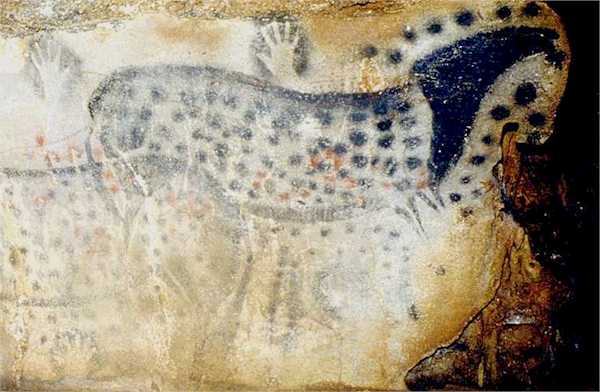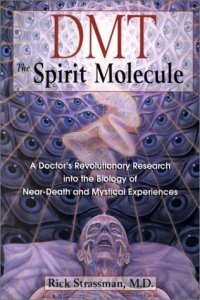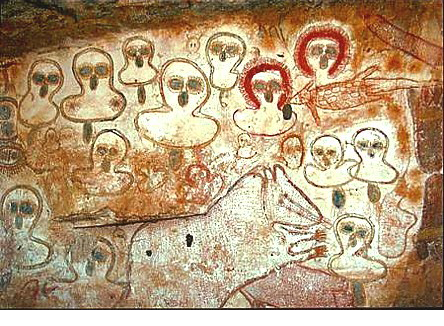This article is an amalgamation of some previous posts at deadbutdreaming, a shorter version of which was recently published by New Dawn Magazine. It probably raises more questions than it gives answers, but I wanted to put these ideas in one place before moving on to any further Cosmic interpretations of what the faerie phenomenon might really be about. There has been an upsurge of interest in the potential ontological realities of the faeries in the last couple of years, and it seems as if folklore, Forteana, science, paranormal research and philosophical metaphysics may be beginning to draw together to tease out what has previously been hidden or unimagined. But the faeries remain elusive; always at the periphery of our cultural vision. They are not going to divest their secrets easily – and that’s perhaps as it should be.
What are the faeries? Where do they come from and where do they go when they’re not interacting with their human observers? Faeries have been an important part of the folkloric repertoire for hundreds (perhaps even thousands) of years, and while they are portrayed in the popular imagination through faerietales and have become disneyfied through the 20th century, their main presence is in the myriad of folktales and anecdotes from every part of the globe. They usually (though not always) take a humanoid form, and interact with human societies as amorphous supernatural entities, appearing in our world to both co-operate with people and as general arbiters of mischief, while also living in their own Otherworld, sometimes accessible to humans either through accident or abduction. While the phenomenon is ancient, the belief in these metaphysical beings continues, and there are thousands of encounter reports from all over the world every year, as demonstrated by the recent survey by The Fairy Investigation Society, which includes c.500 testimonies.
But folklorists are usually ambivalent about the faeries; they are likely to keep their distance from them, so to speak. While happy to record and discuss the beliefs of people who tell stories and anecdotes about them, most folklorists speak the language (at least in official publications) of the reductionist, materialist worldview that has held sway in Western civilisation for the last few hundred years, and they’ll often be reticent about assessing the potential actual reality of metaphysical beings. In the materialist’s world, faeries simply cannot exist. They must be reduced into a categorised cultural belief system, and any discussion of them will usually be couched in the accepted language of scientific rationalism. This creates a problem for any folklorist (or anybody else) who wants to look behind the stories and investigate the possibility that the faeries can be incorporated into our consensus reality as a genuine phenomenon.
But the reductionist scientific orthodoxy has been challenged recently by a range of philosophical hypotheses such as Idealism, backed up by quantum mechanical theory and experiment, which reinstates consciousness (not matter) as the primary mover and creator of reality. When this is done, entities such faeries are allowed back into the universe as an authentic phenomenon, and if we start to look in the right places, we begin to find that they are indeed everywhere… we just need to know where to look, or perhaps more accurately, how to look.

The Electromagnetic Spectrum, Dark Matter and Dark Energy
Our normal waking consciousness experiences less than 0.5% of the entire electromagnetic spectrum, with visible light being less than 0.1% of this. If we take into account the current (mainstream) scientific hypothesis that this electromagnetic spectrum itself composes less than 8% of the universe, with the mysterious Dark Matter and Dark Energy taking up the rest, then we are at a good starting point to understand that our version of reality is extremely compromised. We may have the technology to utilise the unseen wavelengths in the spectrum, but they are not accessible to our ordinary consciousness, whilst Dark Matter and Dark Energy are totally inaccessible to our technology, and remain for the moment, nothing more than theory based on the by-product of mathematical equations. We also have to take into account the recent theoretical mind-bender that the universe may actually be a virtual reality hologram, put in place by (depending on who you listen to) a supreme being, aliens or future versions of humans, the latter option coming from NASA scientist Dr Rich Terrile. With this level of uncertainty about the reality we inhabit, and in order to gain an understanding of the world in which we live (and the unseen entities that may exist alongside us), we might be advised to fall back on the only known certainty allowed us: consciousness.
The Origins of the Faeries in Altered States of Consciousness

Our earliest known artistic portrayals of the world, and how human consciousness interacted with it, come in the form of cave paintings from all parts of the globe, starting c.35,000 BCE. Many of these cave paintings include humanoids and therianthropes, otherworldly entities that have been recorded alongside geometric imagery, stylised animals and landscapes. They are in effect our earliest known folklore. But what state of mind were our Palaeolithic ancestors in when they were painting these strange entities in often difficult to access caves and shelters?
The anthropologist David Lewis-Williams has made the convincing argument that these cave and rock-shelter paintings were produced by shamanic cultures to represent reality as perceived in an altered state of consciousness. Twenty years ago this idea was anathema to anthropologists, but since the work of Lewis-Williams, and many others, the theory has tipped over to become an accepted orthodoxy. There are hundreds of motifs in the cave paintings that correlate with the visionary states of people in an altered state of consciousness, brought about most especially by the ingestion of a psychotropic substance. The basic premise is that the shamans of these Palaeolithic cultures transported themselves into altered states of consciousness and then painted the results of their experiences on the walls of caves and rock shelters — experiences that frequently included therianthropic beings and supernatural humanoids that correlate in many ways with later faerie types.

In his 2005 book Supernatural, Graham Hancock vividly utilises Lewis-Williams’ work to discuss the continuity through time of entities experienced in altered states of consciousness, coming to the conclusion that the faeries of our historic period are one and the same as those portrayed in prehistoric caves. And writers such as Carlo Ginzburg and Emma Wilby have argued that there is a direct link between prehistoric shamanic storytelling and the folklore embodied in classical, medieval and later periods, that often incorporate entities such as nymphs and faeries; supernatural beings that interact with humanity when the conditions are right. Those conditions may well be reliant on the human participants undergoing an altered state of consciousness as a result of the ingestion of psychotropic compounds. There is certainly a preponderance of mushroom imagery associated to historic depictions of faeries, most especially the highly psychedelic red and white Amanita Muscaria (fly agaric) mushroom, and the psilocybin mushroom, both prevalent in Europe and Asia. If these historic folkloric manifestations of interactions with supernatural entities can be linked to the cave art of prehistory and preliterate societies, then we have a continuation of relationship with an alternative reality, accessed through altered states of consciousness, over a very long period of time.

Many of the European faerie motifs repeated in stories and anecdotes through the centuries to the present day were already in place during the medieval period. When folklorists began to collect these stories in earnest from the 19th century onwards, they found a belief in faeries amongst rural populations that was probably very close to the medieval belief and understanding of what faeries were and how they interacted with humanity. Many of the stories include situations where the protagonist interacts with the faeries in what seems an altered state of consciousness: Faerieland doesn’t comply to Newtonian physics, it is consistently inhabited by strange humanoids and therianthropes (the faeries), and there are lots of recurring story motifs that are highly suggestive of an autonomous reality being described. But this is not consensus reality, this is the folklore recording stories from people operating outside consensus reality. The folktales about faeries have been overlain with much allegorical storytelling, but at their root the realities they describe are of people in altered states of consciousness, perhaps not too far from the realities experienced by the Palaeolithic cave painters and shamanic practitioners.
WY Evans-Wentz, Rudolph Steiner and Metaphysical Nature Spirits
 When the folklorist WY Evans-Wentz travelled around the Celtic world at the beginning of the 20th century, collecting stories and anecdotal experiences about the faeries, it was clear that most of his interviewees rated clairvoyance as the best way of altering the conscious state to a position where it could interact with the faeries. Seership or second-sight was the method of entering, or at least viewing, an alternative reality inhabited by a relatively consistent cast of characters, usually recognised as the faeries. He met one such (un-named) Irish clairvoyant in Rosses Point, County Sligo. This seer talked about various types of faeries that inhabited the landscape of Sligo, “making them sound like a cross between nature spirits and mystical visions.” But Evans-Wentz was just as interested in the mechanics of interacting with the faeries as he was with the stories themselves. How did the seer interface with them?
When the folklorist WY Evans-Wentz travelled around the Celtic world at the beginning of the 20th century, collecting stories and anecdotal experiences about the faeries, it was clear that most of his interviewees rated clairvoyance as the best way of altering the conscious state to a position where it could interact with the faeries. Seership or second-sight was the method of entering, or at least viewing, an alternative reality inhabited by a relatively consistent cast of characters, usually recognised as the faeries. He met one such (un-named) Irish clairvoyant in Rosses Point, County Sligo. This seer talked about various types of faeries that inhabited the landscape of Sligo, “making them sound like a cross between nature spirits and mystical visions.” But Evans-Wentz was just as interested in the mechanics of interacting with the faeries as he was with the stories themselves. How did the seer interface with them?
“I have always made a distinction between pictures seen in the memory of nature and visions of actual beings now existing in the inner world. We can make the same distinction in our world: I may close my eyes and see you as a vivid picture in memory, or I may look at you with my physical eyes and see your actual image. In seeing these beings of which I speak, the physical eyes may be open or closed: mystical beings in their own world and nature are never seen with the physical eyes.”
The rural people interviewed by Evans-Wentz consistently affirmed that clairvoyant alteration of consciousness was the best sure-fire way to see the faeries. By the time Evans-Wentz visited these communities, there was a sense that the number of people gifted with second-sight was dwindling; cutting down on communication with the faeries. But at the same time as these rural communities were feeling the increasing pressures of modernism there was a reaction by organisations such as The Theosophical Society (first founded in 1875), which attempted to incorporate metaphysics into an understanding of reality. And their prime metaphysical technology was clairvoyance. The Austrian Theosophist Rudolf Steiner attempted to explain the mechanics of clairvoyance, when a person must transform their usually passive thought forms into something more dynamic. In normal consciousness, thoughts:
“… allow themselves to be connected and separated, to be formed and then dismissed. This life of thought must develop in the elemental world a step further. There a person is not in a position to deal with thoughts that are passive. If someone really succeeds in entering the world with his clairvoyant soul, it seems as though his thoughts were not things over which he has any command; they are living beings… You thrust your consciousness into a place, it seems, where you do not find thoughts that are like those in the physical world, but where they are living beings.” Rudolf Steiner, Perception of the Elemental World (1913).
 Steiner described the specific elemental animating forces at work in the natural world, when perceived clairvoyantly, in what he calls the Supersensible World. For Steiner the elementals in the Supersensible World existed as a range of beings, from devas, which are responsible for entire autonomous landscapes, through to the smaller nature spirits charged with the growth of vegetation. Steiner (basing his epistemology on that originally developed by the 15th-century alchemist Paracelsus) divides these entities into four main types corresponding to earth (Gnomic), water (Undines), air (Sylphs) and heat/light (Salamanders). This is the faerie realm, existing as a non-material autonomous reality that crosses over with ours, and which can be accessed via a clairvoyant altered state of consciousness. Steiner thought everyone has this innate ability, but they had to be taught how to use it… it had somehow become almost forgotten amongst humanity.
Steiner described the specific elemental animating forces at work in the natural world, when perceived clairvoyantly, in what he calls the Supersensible World. For Steiner the elementals in the Supersensible World existed as a range of beings, from devas, which are responsible for entire autonomous landscapes, through to the smaller nature spirits charged with the growth of vegetation. Steiner (basing his epistemology on that originally developed by the 15th-century alchemist Paracelsus) divides these entities into four main types corresponding to earth (Gnomic), water (Undines), air (Sylphs) and heat/light (Salamanders). This is the faerie realm, existing as a non-material autonomous reality that crosses over with ours, and which can be accessed via a clairvoyant altered state of consciousness. Steiner thought everyone has this innate ability, but they had to be taught how to use it… it had somehow become almost forgotten amongst humanity.
This idea finds common ground with the recent work of biochemist Rupert Sheldrake, who proposes that morphogenetic fields are the formative causation allowing life on earth. Sheldrake’s description of this organising principle behind the natural world is issued in the language of biochemistry, but in effect, what he postulates is the same as Steiner’s vision of nature spirits in action. There are invisible forces that are as essential in ordering life on earth as accepted non-material forces such as gravity. Sheldrake calls these morphogenetic fields ‘the memory of nature.’ In effect, Steiner saw nature spirits as anthropogenic representations of these morphogenetic fields, imposed upon them through the thought forms of the observer, who perceives them clairvoyantly.
The Faeries and DMT
But what allows this access to otherworldly realms and the entities that seem to exist there? What allows for clairvoyance, or second-sight? The answer may lie with the substance called N, N-Dimethyltryptamine – DMT. This molecule is one of the main active ingredients in the Ayahuasca brew used by Amazonian shamans, but it is also produced endogenously in everyone’s brain, potentially (but not definitely) in the pineal gland. It’s usually safely dispersed around the brain and body for functional duties, but it seems that under certain circumstances, it can be released in higher quantities, causing an altered state of consciousness. This would require the DMT to be released in conjunction with Monoamine Oxidase Inhibitors (MAOI), which inhibit naturally occurring enzymes in the human body. This inhibition leads to increased levels of chemicals such as the neurotransmitters serotonin and dopamine. By slowing their metabolism, MAOIs can allow a surge of DMT production to have full effect and create radically transformed states of consciousness.

There is some evidence that this can happen during a frontal lobe epileptic seizure. This may be the root of the well-documented 17th-century Cornish story of Anne Jefferies’ abduction by diminutive faeries when she suffered a ‘convulsion fit’ and was transported (at least in her mind) to a numinous world inhabited by the faeries. The author Eve LaPlante has used historic and contemporary examples to demonstrate that Temporal Lobe Epilepsy can provide access to an altered state of consciousness where the human mind participates in a reality several steps removed from the consensus material world. This often includes full immersion in alternative landscapes and contact with non-human intelligence.
The late and great Terence McKenna was an enthusiastic user of the synthesised form of DMT to access different realities, and coined the term ‘self-transforming machine elves’ for the creatures he regularly found there. As if to confirm Terence’s assertions, a research study conducted between 1990 and 1995 in the General Clinical Research Center of the University of New Mexico Hospital, by Dr Rick Strassman found that volunteers on the study injected with varying amounts of DMT underwent profound alterations of consciousness. This involved immediate cessation of normal consciousness and transportation to a different realm of reality with divergent physical properties, and inhabited by a range of creatures described as elves, faeries, lizards, reptiles, insects, aliens, clowns (yes, clowns) and various therianthropic entities. One woman even describes a pulsating entity that she called ‘Tinkerbell-like’. The experiences, especially at higher doses, represented to the participants a parallel reality that was ‘super real’, not an hallucination, not a dream, but a substantial built reality with full sensory interaction + telepathy.
 The experience reports from the study are irrational, absurd, frightening, illogical and surreal. There is no question of any of the volunteers physically leaving the hospital bed during their experiences, but for all of them (without exception) the DMT-world was every bit as real as the one their minds left behind. After the injections participants frequently talked about ‘blasting through’ or ‘breaking through a barrier’ after which they found themselves in a realm with its own laws of physical space and movement, and its own inhabitants.
The experience reports from the study are irrational, absurd, frightening, illogical and surreal. There is no question of any of the volunteers physically leaving the hospital bed during their experiences, but for all of them (without exception) the DMT-world was every bit as real as the one their minds left behind. After the injections participants frequently talked about ‘blasting through’ or ‘breaking through a barrier’ after which they found themselves in a realm with its own laws of physical space and movement, and its own inhabitants.
There are dozens of recorded experiences from the study, and the participants are all engaging in a non-physical reality directly with their consciousness, seemingly separated from their physical selfs. Some of the experiences agree in type to certain aspects of the faerie phenomenon. But what the research demonstrates is that under the right conditions, human consciousness can operate within a distinct and separate universe inhabited by a range of apparently autonomous entities. These entities may be one and the same as the metaphysical beings recorded in prehistoric cave art and historic folklore, by people who were describing the beings encountered during various types of altered states of consciousness, brought on either actively or passively. The faeries may change superficially through time, adapting to the expectations of the culture they are part of, but if it is human consciousness they are interacting with, this is no surprise. Underneath the cultural masks, the faeries begin to reveal their true selfs.
Materialism vs Consciousness
 There are many reasons why folklore about the faeries exists, and it certainly seems that interacting with them during an altered state of consciousness is one of them. Are they real experiences? They are subjectively real, but what is the objective reality? A Theosophist clairvoyant would suggest that we need to override our five senses with a dynamic type of consciousness that commands prominence over the material world. They would probably agree with Aldous Huxley’s description of a universal consciousness being ‘Mind at Large’ and that the brain is a ‘reducing valve transceiver’, that can be retuned by a variety of methods. Huxley did this with Mescaline (and later LSD), describing the experiences in his 1954 book The Doors of Perception.
There are many reasons why folklore about the faeries exists, and it certainly seems that interacting with them during an altered state of consciousness is one of them. Are they real experiences? They are subjectively real, but what is the objective reality? A Theosophist clairvoyant would suggest that we need to override our five senses with a dynamic type of consciousness that commands prominence over the material world. They would probably agree with Aldous Huxley’s description of a universal consciousness being ‘Mind at Large’ and that the brain is a ‘reducing valve transceiver’, that can be retuned by a variety of methods. Huxley did this with Mescaline (and later LSD), describing the experiences in his 1954 book The Doors of Perception.
The brain certainly gives us a very limited view of what is actually going on around us. Altering the transmission to the brain seems to allow non-material consciousness more of a free rein. As in a dream, an altered consciousness is able to construct metaphysical realities. It is able to communicate with the entities it finds there, and bring back a report. The relative consistency of the inhabitants of this alternative reality may suggest that they live there all the time, non-physical, and only able to interact with our physical world when conditions are right for an individual’s consciousness. This is the crux: does consciousness create physical reality, or is consciousness an epiphenomenon of the brain? If the former, then the realities experienced in altered states of consciousness can be accepted as true, with their own autonomous existence. If the latter, then while entities such as the faeries may be subjectively real, they do not exist objectively within the electromagnetic spectrum. This is the materialist/physicalist view. Although even physicalism has to adhere to its own rules and allow for the hypothesis that over 90% of the universe consists of non-physical form: Dark Matter and Dark Energy. Maybe that’s where the faeries are; waiting to be found.
Faeries and Aliens
 But the ontological reality of faeries (in whatever form) has in recent decades become linked to other ‘paranormal’ activity types, primary of which is the intrusion into our consensus reality of entities usually known as aliens. The first person to suggest a definitive link between the the reports of faerie experiences and alien encounters was the astronomer and computer scientist Jacques Vallée. In his 1969 book Passport to Magonia he put forward the theory that the faeries were one and the same as the alien beings who had been purportedly abducting people around the world for a couple of decades by that date. His hypothesis is that there is a commonality to the experiences reported in alien abduction scenarios, and the reports of interactions with faeries in folklore. He suggests the aliens and the faeries are essentially the same phenomenon, tuned through the cultural receptors of the time and then interpreted accordingly. He makes special reference to the regular motifs in faerie-tales of the abduction, by various means, of humans by faeries. There’s a lot of data here – it’s the commonest motif in faerie folklore, and continues to be reported in anecdotal testimonies. For a variety of reasons humans are taken to an alternative faerie reality, either as midwives or nurses for faerie children, as servants to the faeries, for sex, as punishment or reward, or just because the faeries feel like it. These motifs, of course, coincide with many aspects of the consistently strange phenomenon of alien abductions, reports of which have grown at an exponential rate since the early 1950s. Vallée uses a range of evidence to tie-up faerie abductions from folklore and alien abductions from modern reports, and goes as far to state:
But the ontological reality of faeries (in whatever form) has in recent decades become linked to other ‘paranormal’ activity types, primary of which is the intrusion into our consensus reality of entities usually known as aliens. The first person to suggest a definitive link between the the reports of faerie experiences and alien encounters was the astronomer and computer scientist Jacques Vallée. In his 1969 book Passport to Magonia he put forward the theory that the faeries were one and the same as the alien beings who had been purportedly abducting people around the world for a couple of decades by that date. His hypothesis is that there is a commonality to the experiences reported in alien abduction scenarios, and the reports of interactions with faeries in folklore. He suggests the aliens and the faeries are essentially the same phenomenon, tuned through the cultural receptors of the time and then interpreted accordingly. He makes special reference to the regular motifs in faerie-tales of the abduction, by various means, of humans by faeries. There’s a lot of data here – it’s the commonest motif in faerie folklore, and continues to be reported in anecdotal testimonies. For a variety of reasons humans are taken to an alternative faerie reality, either as midwives or nurses for faerie children, as servants to the faeries, for sex, as punishment or reward, or just because the faeries feel like it. These motifs, of course, coincide with many aspects of the consistently strange phenomenon of alien abductions, reports of which have grown at an exponential rate since the early 1950s. Vallée uses a range of evidence to tie-up faerie abductions from folklore and alien abductions from modern reports, and goes as far to state:
“… the modern, global belief in flying saucers and their occupants is identical to an earlier belief in the fairy-faith. The entities described as the pilots of the craft are indistinguishable from the elves, sylphs and lutins of the Middle Ages. Through the observations of unidentified flying objects, we are concerned with an agency our ancestors knew well and regarded with terror: we are prying into the affairs of The Secret Commonwealth.”
 The Secret Commonwealth was the term coined for the faeries by the Reverend Robert Kirk in a manuscript of 1691, which includes a detailed description of their appearance, habits and exploits, gleaned from both his own experiences and those Scottish Highlanders purporting to have second-sight, or clairvoyance. As Vallée points out, Kirk’s descriptions of the faeries and their modus operandi bear more than a passing resemblance to the alien visitors of the 20th and 21st centuries.
The Secret Commonwealth was the term coined for the faeries by the Reverend Robert Kirk in a manuscript of 1691, which includes a detailed description of their appearance, habits and exploits, gleaned from both his own experiences and those Scottish Highlanders purporting to have second-sight, or clairvoyance. As Vallée points out, Kirk’s descriptions of the faeries and their modus operandi bear more than a passing resemblance to the alien visitors of the 20th and 21st centuries.
Among their attributes was an ability to float through the air with insubstantial and fluid bodies, that they could make appear and disappear at will. This allowed them to ‘swim’ through the air and carry off mortals, usually to large circular abodes, that Kirk presumed were underground, and which were lit by a dim, unknown illumination. They even had ‘ætheriall vehicles’ to carry them around the sky. Kirk also asserted that the faeries had a nature intermediate between humans and angels. Their habit of abducting humans was usually for the purpose of wet-nursing faerie children or as midwives; a theme that fits in with the deluge of recent alien abduction reports (subsequent to Vallée’s investigations in 1969) that would suggest one of the main reasons for abduction is to obtain both parents and wet-nurses for hybrid human-alien offspring. Vallée quotes the 19th-century folklorist Edwin Hartland’s suggestion that such a programme of hybridisation was a primary reason for faerie abductions:
“The motive assigned to fairies in northern stories is that of preserving and improving their race, on the one had by carrying off human children to be brought up among the elves and to become united with them, and on the other hand by obtaining the milk and fostering care of human mothers for their own offspring.”
In 2005, Graham Hancock followed Vallee’s lead and took the comparison of faerie and alien abduction much further in his book Supernatural (after dealing with the elements of prehistoric shamanic cave-painting depictions of entities, discussed above). He compiled a range of faerie abduction reports from various time periods and geographical locations and set them against modern-day alien abduction events. He pays special attention to the faerie abduction of young women, such as Mrs Sheridan, an Irish woman, who seems to have spent much of the last decade of the 19th century being whisked off by the fairies for wet-nursing duties:
“Where they brought me I don’t know, or how I got there, but I’d be in a very big house, and it was round, the walls far away that you’d hardly see them, and a great many faeries all about… but they wouldn’t speak to me nor I to them.”
These ‘long-faced’ faeries had a definite purpose for kidnapping her and weren’t too concerned with her tearful appeals to release her – she had a job to do, and that was feeding their faerie babies. The correlation between these types of folkloric encounters and the alien abductions of women is striking. Hancock surveys the work of the late Harvard psychiatrist John Mack and the cultural historian David Jacobs, who have made extensive studies of people who claim to have been abducted by aliens, often using hypnotic techniques to extract memories from amnesic events. It’s a minefield subject (mostly due to the vagaries of extracting memories from hypnosis), but John Mack in particular is a convincing advocate of the notion that whatever the experiences represent, they are genuinely real to the participant. The abductee, after being floated or beamed aboard the UFO is taken to a part of the ship where there seem to be drawers or tanks of hybrid alien-human babies, which they are expected to nurse. There is a consistency to these experiences (there are tens of thousands of them) that provides a dataset of testimony that Mack and Jacobs insist must be taken seriously as a phenomenon. For the abductees, the experience is often highly traumatic (Mack states that the best psychiatric diagnosis for many abductees is post-traumatic stress disorder), and no wonder, when they are confronted with alien hybrids often described as more like foetuses than babies. One abductee described to Mack their appearance, which is fairly typical:
“Their bodies were short for their heads. Their heads seemed oversized. They had very blue eyes. They had very thin, wispy hair… I would say they were probably three and a half feet tall, but they all looked the same age. ‘You’re our mother and we need you,’ they said.”
 The evidence presented by Jacques Vallée and Graham Hancock makes a convincing argument for the tight relation between faerie abductions in folklore and alien abductions in the 20th/21st century. It is a relation that has been skilfully investigated by Joshua Cutchin in his 2018 book Thieves in the Night: A Brief History of Supernatural Child Abductions, where he uses a wide range of folkloric, historic and modern testimony data to investigate child abductions by supernatural entities, coming to the conclusion that:
The evidence presented by Jacques Vallée and Graham Hancock makes a convincing argument for the tight relation between faerie abductions in folklore and alien abductions in the 20th/21st century. It is a relation that has been skilfully investigated by Joshua Cutchin in his 2018 book Thieves in the Night: A Brief History of Supernatural Child Abductions, where he uses a wide range of folkloric, historic and modern testimony data to investigate child abductions by supernatural entities, coming to the conclusion that:
“The parallels between aliens and faeries are remarkable and extend deeply into the lore surrounding paranormal child abduction. The means and motivations behind both phenomena imply a shared ontological reality…”
The experiences are culturally coded to time and place, but the correlations and similarities are intriguing, and suggest the possibility of a common source for the phenomena. But what is that source? Is it purely a metaphysical attribute interacting at the non-material level of consciousness, or is there a physical dimension? Perhaps more importantly, can we make the differentiation between consciousness and material reality?
Ontological Faeries
This brings us back to the ontology of faerie experiences; what are these entities that have been a part of humanity for thousands of years, and where do they come from? They may be adapting to cultural codes, even evolving into new forms, but at what level of reality do they exist?
An answer may be to utilise David Luke’s three-part interpretation for metaphysical entity contact. He used it to assess a study into the otherworldly beings (many of which had faerie-attributes) encountered by people who had altered their states of consciousness with DMT, but it is also a valid tool to evaluate what may be happening to anyone who reports a numinous experience that includes interaction with non-ordinary entities such as the faeries:
- They are hallucinations. The entities are subjective hallucinations. Such a position is favoured by those taking a purely (materialist-reductionist) neuropsychological approach to the phenomena.
- They are psychological/ transpersonal manifestations. The communicating entities appear alien but are actually unfamiliar aspects of ourselves, be they our reptilian brain or our cells, molecules or sub-atomic particles.
- The entities exist in otherworlds and can interact with our physical reality. A numinous experience provides access to a true alternate dimension inhabited by independently existing intelligent entities in a stand-alone reality, which exists co-laterally with ours, and may interact with our world when certain conditions are met. The identity of the entities remains speculative.
Of course, all three interpretations may be true at different times and under various circumstances. From a materialist-reductionist standpoint, all faerie experiences could be reduced to hallucinatory events. There is no physical residue as an after-effect of the interactions, and the reports are all limited to visual and audio experiences. While the specific adjuncts allowing for the hallucinations to take place cannot be properly analysed, seeing them all as aberrations of visual and audial fields remains one legitimate interpretation.
This explanatory model is reliant on the theory that consciousness is an epiphenomenon of the brain. The implication is that the brain, for whatever reason, is simply misconstruing sensory input from a physical world where things like faeries simply do not exist. This is the hard and fast materialist-reductionist standpoint, which is deeply embedded in Western culture. But, as discussed above, it is a standpoint that is now challenged at a fundamental level not only by religious and mystical traditions, but also by the recently reinvented philosophy of Kantian Idealism and by a growing number of quantum physicists, who (using a wide range of methodologies) suggest that the brain is a reducer of consciousness, not a creator of it. This model sees consciousness (not matter) as primary; it is everywhere and it is everything, and individual human (and animal) brains are merely conveying it within the remit of what then becomes physical reality. For the most part, this physical reality has a closely defined rule-set, but under certain conditions the usual laws break down and metaphysical events can occur. These supernatural occurrences are thus as legitimate as any natural occurrence. The philosopher Jeffrey Kripal describes this in relation to traumatic episodes that cause apparently non-ordinary experiences in his 2017 book written with Whitley Streiber, The Super Natural: A New Vision of the Unexplained:
“The body-brain crafts consciousness into a human form through a vast network of highly evolved biology, neurology, culture, language, family, and social interactions until a more or less stable ego or ‘I’ emerges, rather like the way the software and hardware of your laptop can pick up a Wi-Fi signal and translate the Internet into the specificities of your screen and social media. The analogy is a rough and imperfect one, but it gets the basic point across. Sometimes, however, the reducer is compromised or temporarily suppressed. The filtering or reduction of consciousness does not quite work, and other forms of mind or dimensions of consciousness, perhaps even other species or forms of life, that are normally shut out now ‘pop in.’ In extreme cases, it may seem that the cosmos itself has suddenly come alive and is all there. Perhaps it is.”
While most faerie encounters are not the result of trauma, this helps us to perhaps understand preternatural faerie experiences as something metaphysical being allowed to ‘pop in’ from either a greater, transcendent form of consciousness, or from an alternative reality to which humans do not usually have access. This would fit with either of David Luke’s second and third interpretations for supernatural entity contact. Simply put, a numinous zone has been entered and the participant is able to make contact with what usually resides external to their ordinary consciousness.
Experiences in numinous zones could be extended to a variety preternatural encounters, from ghost apparitions through to Near Death Experiences and UFO abduction scenarios, but it would seem that the faeries, as an ontological taxonomic, remain a consistent, even persistent, form of entity that interact with our consensus reality. While reports of the faeries from history have often been turned into folkloric stories (frequently with a moral lesson inserted into the plot line), modern encounters usually take the form of anecdotal testimony. But the phenomenological types of faeries retain an adherence to their folkloric roots. They can receive an updated appearance, and cultural coding, but they remain recognisable as faeries. Graham Hancock has summed up what may be happening if we allow the faeries some type of metaphysical reality:
“If we are prepared to set aside the automatic scepticism and reductionism of our age, and if we spell out the problem in plain language, then we find that we are contemplating the existence of highly intelligent discarnate entities belonging to an order of creation fundamentally different than our own… it really is almost as though the beings we are dealing with have been changing and developing alongside us for thousands of years, and that they therefore cannot simply be mass delusions, but must have a definite, independent reality outside the human brain.”
Whatever their true nature, it seems that for the faeries to make contact with humanity they require our consciousness to become loosened from the usual restraints, and to enter a numinous zone. If the model of reality affirmed by Idealism is correct, then this zone may be allowing us to access a greater Over-Mind, where exist entities that represent either a stand-alone autonomous class of their own, or perhaps aspects of the human collective consciousness (as explicated by Carl Jung), which is usually filtered out through the reducing valve of the brain. Either way, it appears that the faeries are here to stay, functioning in some nebulous region where any interpretation of them is reliant on us finding a way to incorporate consciousness into physical reality. This is something that has eluded both philosophers and scientists for millennia, and so perhaps it is no surprise that the faeries – whether nature spirits, inter-dimensional beings, aliens, or products of our collective imagination – for the moment, remain an intangible part of our cultural zeitgeist.
The cover image is by the reliably supernal artist Ylenia Viola, whose artwork can be found at Fairytalesneverdie. Thanks to Ylenia for her permission to reproduce this image called ‘This is a Work of Fiction’.
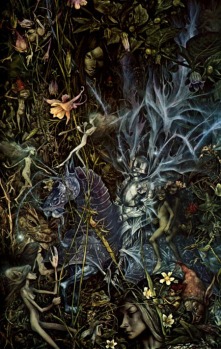
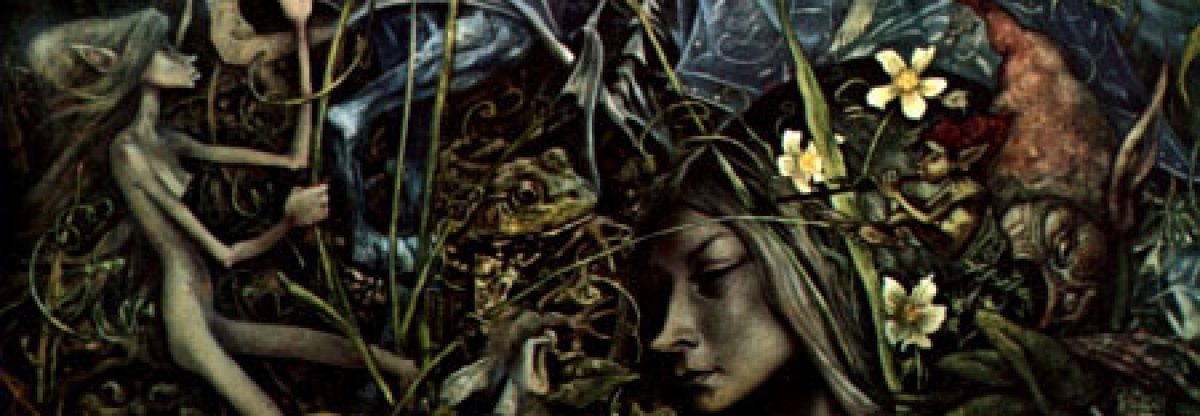


 book by Tompkins and Bird:
book by Tompkins and Bird:  In 2011 an exceptional book was published,
In 2011 an exceptional book was published, 


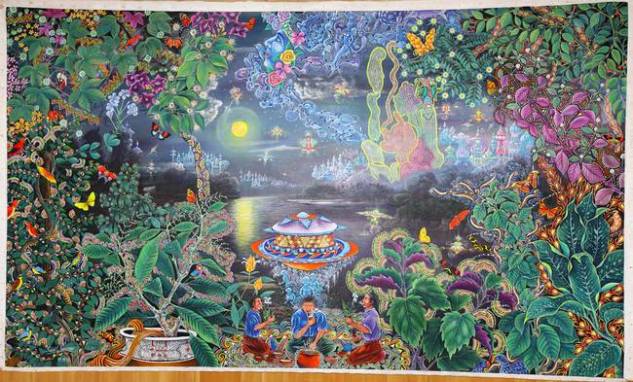

 People having Out of Body Experiences are doing the same thing, and some of them mention encounters with other OBE-ers, or frightening encounters with less agreeable astral beings. Probably the air around us is alive with astral junk, and not being able to see them is a gift. ‘Only with DMT do people meet up with them, with other beings in a nonmaterial world’, writes Rick Strassman in his book
People having Out of Body Experiences are doing the same thing, and some of them mention encounters with other OBE-ers, or frightening encounters with less agreeable astral beings. Probably the air around us is alive with astral junk, and not being able to see them is a gift. ‘Only with DMT do people meet up with them, with other beings in a nonmaterial world’, writes Rick Strassman in his book  Jacques Vallée has done pioneering work in
Jacques Vallée has done pioneering work in 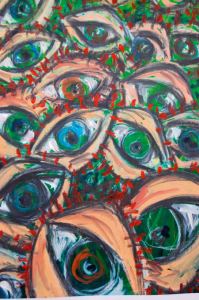

 faerie encounters in the 20th century: Marjorie Johnson’s
faerie encounters in the 20th century: Marjorie Johnson’s 

 Research Center of the University of New Mexico Hospital, by Dr Rick Strassman. It found that volunteers on the study injected with varying amounts of DMT underwent profound alterations of consciousness. This involved immediate cessation of normal consciousness and transportation to a different realm of reality with divergent physical properties, and inhabited by a range of creatures described as elves, faeries, lizards, reptiles, insects, aliens, clowns (yes, clowns) and various therianthropic entities. One woman even describes a pulsating entity that she described as ‘Tinkerbell-like’. The experiences, especially at higher doses, represented to the participants a parallel reality that was ‘super real’, not an hallucination, not a dream, but a substantial built reality with full sensory interaction + telepathy. Strassman published the results as
Research Center of the University of New Mexico Hospital, by Dr Rick Strassman. It found that volunteers on the study injected with varying amounts of DMT underwent profound alterations of consciousness. This involved immediate cessation of normal consciousness and transportation to a different realm of reality with divergent physical properties, and inhabited by a range of creatures described as elves, faeries, lizards, reptiles, insects, aliens, clowns (yes, clowns) and various therianthropic entities. One woman even describes a pulsating entity that she described as ‘Tinkerbell-like’. The experiences, especially at higher doses, represented to the participants a parallel reality that was ‘super real’, not an hallucination, not a dream, but a substantial built reality with full sensory interaction + telepathy. Strassman published the results as 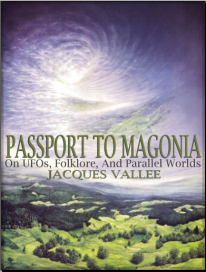 Indeed, in his 1969 book
Indeed, in his 1969 book  hypnotic techniques to extract memories from amnesic events. It’s a minefield subject, but John Mack in particular is a convincing advocate of the notion that whatever the experiences represent, they are genuinely real to the participant. One common motif involves the abductee, after being floated or beamed aboard the UFO, being taken to a part of the ship where there seem to be drawers or tanks of hybrid alien-human babies, which they are expected to nurse. There is a consistency to these experiences (there are thousands of them) that provides a dataset of testimony that Mack and Jacobs insist must be taken seriously as a phenomenon. For the abductees, the experience is often highly traumatic (Mack states that the best psychiatric diagnosis for many abductees is post-traumatic stress disorder), and no wonder, when they are confronted with alien hybrids often described as more like foetuses than babies. One abductee described to Mack their appearance, which is fairly typical: “Their bodies were short for their heads. Their heads seemed oversized. They had very blue eyes. They had very thin, wispy hair… I would say they were probably three and a half feet tall, but they all looked the same age. ‘You’re our mother and we need you,’ they said.”
hypnotic techniques to extract memories from amnesic events. It’s a minefield subject, but John Mack in particular is a convincing advocate of the notion that whatever the experiences represent, they are genuinely real to the participant. One common motif involves the abductee, after being floated or beamed aboard the UFO, being taken to a part of the ship where there seem to be drawers or tanks of hybrid alien-human babies, which they are expected to nurse. There is a consistency to these experiences (there are thousands of them) that provides a dataset of testimony that Mack and Jacobs insist must be taken seriously as a phenomenon. For the abductees, the experience is often highly traumatic (Mack states that the best psychiatric diagnosis for many abductees is post-traumatic stress disorder), and no wonder, when they are confronted with alien hybrids often described as more like foetuses than babies. One abductee described to Mack their appearance, which is fairly typical: “Their bodies were short for their heads. Their heads seemed oversized. They had very blue eyes. They had very thin, wispy hair… I would say they were probably three and a half feet tall, but they all looked the same age. ‘You’re our mother and we need you,’ they said.”


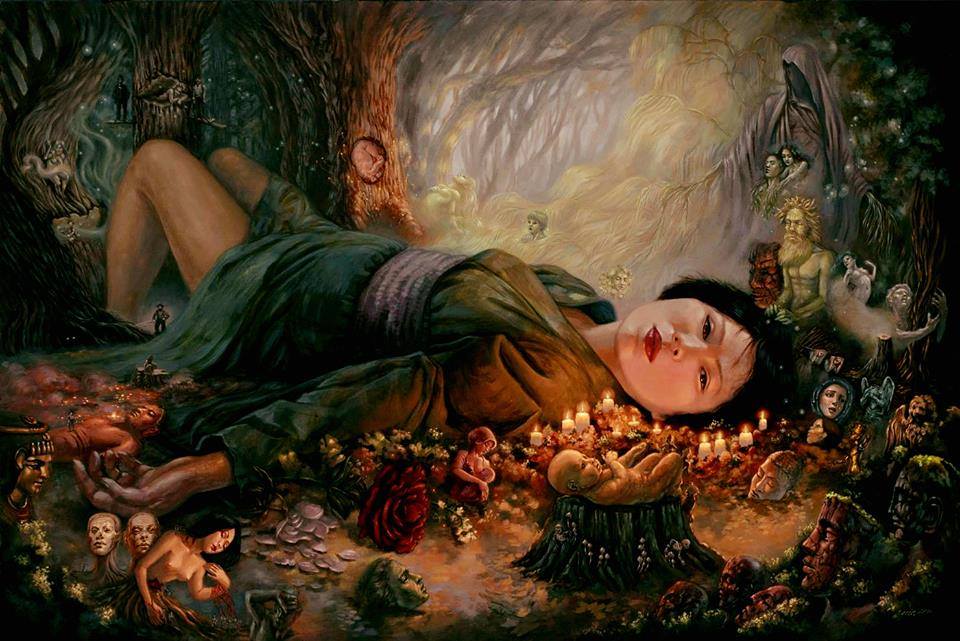







 Such statuary and reliefs are important to the radical but intriguing theory put forward by the philosopher
Such statuary and reliefs are important to the radical but intriguing theory put forward by the philosopher 

 medieval vernacular belief in faeries, mostly by utilizing the surviving texts of mystery plays, to demonstrate that there was a widespread acceptance of the faeries as a supernatural race of beings who interacted with humans on a regular basis. He makes the convincing argument that this was a popular cultural reaction to the ecclesiastical conception of faeries as minor-demons. Many of the mystery plays (which were performed in villages and towns throughout medieval Europe) incorporated faeries as plot devices, with the assumption that the audience would know exactly who they were, and that they were not demons, but rather arbiters of a supernatural realm that was neither heaven nor hell. However, the faeries rarely made it into medieval artwork without being mutated into demons. It took the Renaissance to reestablish them as an integral species of otherworldly characters within works of art.
medieval vernacular belief in faeries, mostly by utilizing the surviving texts of mystery plays, to demonstrate that there was a widespread acceptance of the faeries as a supernatural race of beings who interacted with humans on a regular basis. He makes the convincing argument that this was a popular cultural reaction to the ecclesiastical conception of faeries as minor-demons. Many of the mystery plays (which were performed in villages and towns throughout medieval Europe) incorporated faeries as plot devices, with the assumption that the audience would know exactly who they were, and that they were not demons, but rather arbiters of a supernatural realm that was neither heaven nor hell. However, the faeries rarely made it into medieval artwork without being mutated into demons. It took the Renaissance to reestablish them as an integral species of otherworldly characters within works of art.















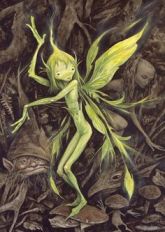 In 1978
In 1978 
















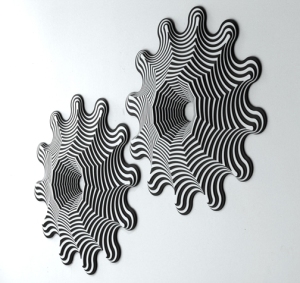


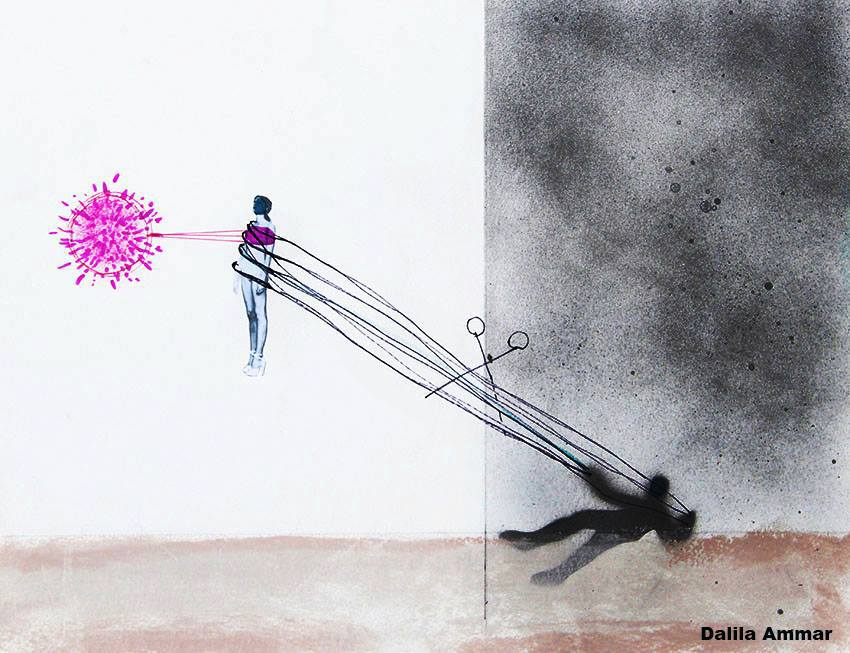




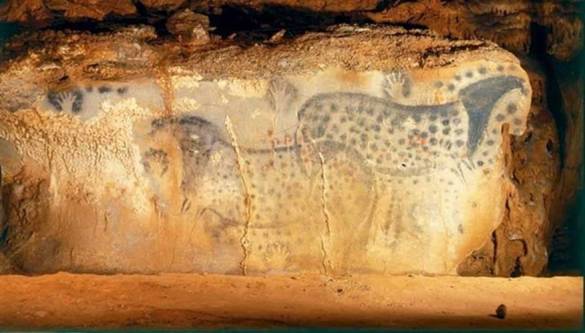






 Inspired by the Theosophist movement, Marjorie Johnson (acting on behalf of the
Inspired by the Theosophist movement, Marjorie Johnson (acting on behalf of the 
 underwent profound alterations of consciousness. This involved immediate cessation of normal consciousness and transportation to a different realm of reality with divergent physical properties, and inhabited by a range of creatures described as elves, faeries, lizards, reptiles, insects, aliens, clowns (yes, clowns) and various therianthropic entities. One woman even describes a pulsating entity that she described as ‘Tinkerbell-like’. The experiences, especially at higher doses, represented to the participants a parallel reality that was ‘super real’, not an hallucination, not a dream, but a substantial built reality with full sensory interaction + telepathy. Strassman published the results as DMT: The Spirit Molecule, and there is a lucid
underwent profound alterations of consciousness. This involved immediate cessation of normal consciousness and transportation to a different realm of reality with divergent physical properties, and inhabited by a range of creatures described as elves, faeries, lizards, reptiles, insects, aliens, clowns (yes, clowns) and various therianthropic entities. One woman even describes a pulsating entity that she described as ‘Tinkerbell-like’. The experiences, especially at higher doses, represented to the participants a parallel reality that was ‘super real’, not an hallucination, not a dream, but a substantial built reality with full sensory interaction + telepathy. Strassman published the results as DMT: The Spirit Molecule, and there is a lucid  what are incredible records of accessing very different realities. There is no question of any of the volunteers physically leaving the hospital bed during their experiences, but for all of them (without exception) the DMT-world was every bit as real as the one their minds left behind. After the injections participants frequently talked about ‘blasting through’ or ‘breaking through a barrier’ after which they found themselves in a realm with its own laws of physical space and movement, and its own inhabitants. Here is an abbreviated version of one of the volunteer’s description of his experience; 50 year old Jeremiah. After hurtling through a void he found himself:
what are incredible records of accessing very different realities. There is no question of any of the volunteers physically leaving the hospital bed during their experiences, but for all of them (without exception) the DMT-world was every bit as real as the one their minds left behind. After the injections participants frequently talked about ‘blasting through’ or ‘breaking through a barrier’ after which they found themselves in a realm with its own laws of physical space and movement, and its own inhabitants. Here is an abbreviated version of one of the volunteer’s description of his experience; 50 year old Jeremiah. After hurtling through a void he found himself:
 similarities to certain faerie motifs (discussed in more detail here:
similarities to certain faerie motifs (discussed in more detail here: 
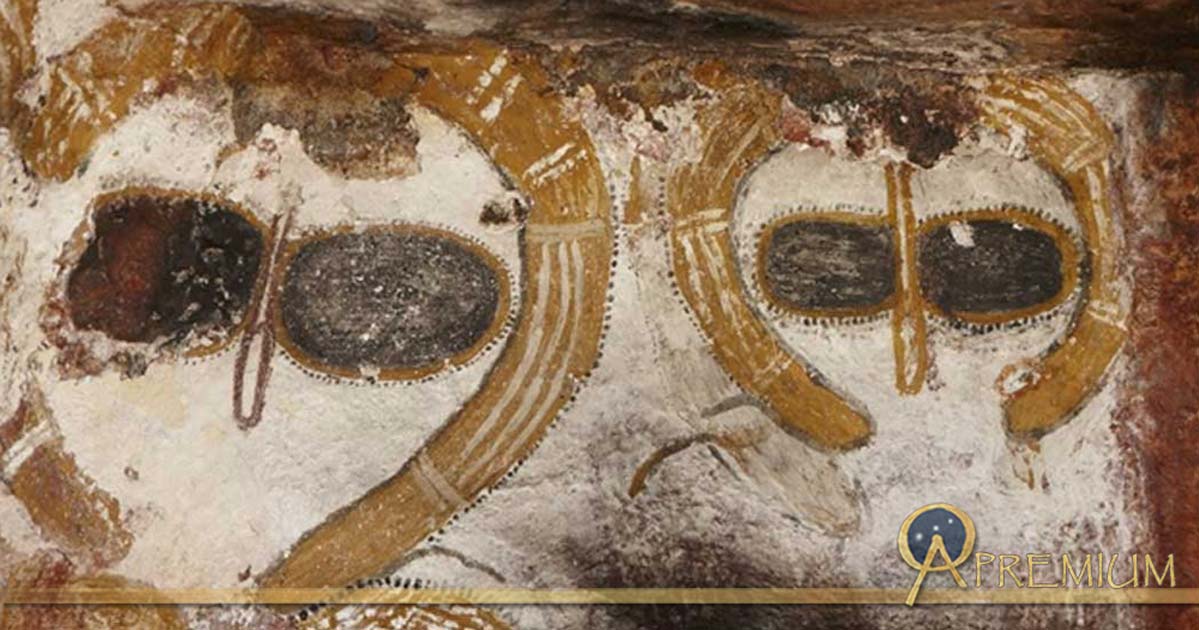
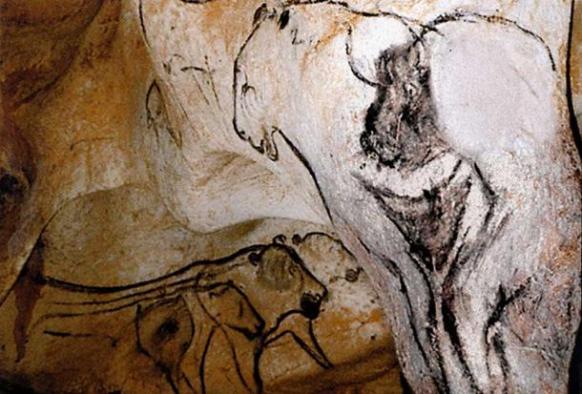

 His hypothesis is that there is a commonality to the experiences reported in alien abduction scenarios, and the reports of interactions with faeries in folklore. He suggests the aliens and the faeries are essentially the same phenomenon, tuned through the cultural receptors of the time and then interpreted accordingly. He makes special reference to the regular motifs in faerie-tales of the abduction, by various means, of humans by faeries. There’s a lot of data here – it’s the commonest motif in faerie folklore. For a variety of reasons humans are taken to faerieland in the stories, either as midwives or nurses for faerie children, as servants to the faeries, for sex, as punishment or reward, or just because the faeries feel like it. They were also keen on abducting babies, and replacing them with changelings; wizened old faerie creatures who would usually die before the end of the story if a ruse to return the human baby wasn’t discovered. These motifs, of course, coincide with many aspects of the monumentally strange phenomenon of alien abductions, reports of which have grown at an exponential rate since the early 1950s. Vallee uses a range of evidence to tie-up faerie abductions from folklore and alien abductions from modern reports, and goes as far to state:
His hypothesis is that there is a commonality to the experiences reported in alien abduction scenarios, and the reports of interactions with faeries in folklore. He suggests the aliens and the faeries are essentially the same phenomenon, tuned through the cultural receptors of the time and then interpreted accordingly. He makes special reference to the regular motifs in faerie-tales of the abduction, by various means, of humans by faeries. There’s a lot of data here – it’s the commonest motif in faerie folklore. For a variety of reasons humans are taken to faerieland in the stories, either as midwives or nurses for faerie children, as servants to the faeries, for sex, as punishment or reward, or just because the faeries feel like it. They were also keen on abducting babies, and replacing them with changelings; wizened old faerie creatures who would usually die before the end of the story if a ruse to return the human baby wasn’t discovered. These motifs, of course, coincide with many aspects of the monumentally strange phenomenon of alien abductions, reports of which have grown at an exponential rate since the early 1950s. Vallee uses a range of evidence to tie-up faerie abductions from folklore and alien abductions from modern reports, and goes as far to state:

